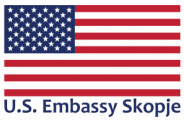At the beginning of March 2020 several foreign media outlets have reported that the Pope has contracted COVID-19. This news was quickly refuted and confirmed as false. What is the purpose of such misinformation?
Behind such aberrations in news reporting two main reasons may stand behind:
a) Dramatization and irresponsible scaremongering
The media are aware that disturbing news cause anxiety and are the most viewed and clicked type of content. Even in regular circumstances journalists often use tricks to dramatize the news (s.c. scaremongering) in order to incite fear and increase attention and reactions by the audience. Topics such as pandemic and coronavirus are a click bait gold mine for the media. These cases show high ethical irresponsibility of journalists and the media, who sacrifice the public order and interest for their personal gains. One of the consequences of such irresponsible coverage was the panic shopping in markets in all countries with COVID-19 cases.
b) Systematic dissemination of misinformation
A much more serious problem than the previous type is the organized disinformation campaigning. They are often overlapping with the first type and in the confusion they spread they are mistakenly called irresponsibility by of individuals or isolated incidents. Due to their far serious negative impact, we will focus mostly on them.
Crisis situations require increased responsibility from all actors in the society. Authorities and institutions must focus on crisis management and problem solving. The professional services must fulfill their obligations under increased pressure, and the citizens must follow the recommendations of the institutions that deal with the crisis with greater discipline.
What about the media?
The media has a very responsible role in the society in crisis situations and must focus more on their work in line of the public interest. This should be done through accurate, timely and responsible reporting and information dissemination. The media should continue to critically monitor developments in the society and in crisis situations, with a key focus in their work on the protections of public interest.
How public interest can be endangered in crisis situations can be summarized in three (3) key types of communication difficulties:
The EU members have not banned the Russian humanitarian plane
The health minister does not operate at night during the pandemic
Russia deploying coronavirus disinformation to sow panic in West, EU document says
False news caused panic among a larger group of citizens
It is not true that Italian citizens massively remove the EU flag
Misinformation about the coronavirus in the prisons
The motives for these very harmful activities are mostly political, economic or ideological, but in all of them the damages are very serious and can easily get out of control.
On the other hand, the media, besides the need not to undermine the functioning of the system in times of crisis, they at the same time must be very watchful not to become a means of manipulation by the authorities. The most common problems of this type may be the following:
China Concealed Extent of Virus Outbreak, U.S. Intelligence Says
Orban uses the pandemic to jeopardize democracy
Debar was not left without an epidemiologist
It is in times of crisis that achieving this balance in the work of the media is very delicate and this further thins the line between responsible and irresponsible journalism. The key pillars that should guide the media in achieving this balance should be:
Respecting the principle of truth
Respecting the principles of fairness and responsibility
Respecting the laws and professional codes of ethics
With the online media, the problems are even more complicated.
Their usual method for attracting attention and visitors to their sites in times of crisis can be very harmful. Regardless of whether there is a malice intention behind or not, online media can jeopardize public order and interest when they rush to publish unverified information, share content that is not sufficiently supported by facts, or continue to use various “tricks” when publishing manipulative headlines, unprofessional comments on the crisis and various conspiracy theories.
Unfortunately, the most common way to deal with these problems is through negative experiences: when something extreme and unintended happens, the media learn where the red lines of their responsibility are, or how far they can go with their irresponsibilereporting.
How do we know when the spread of panic and misinformation is organized?
–One of the most reliable indicators for this is their rapid increase. When the number and volume of misinformation grows abruptly, and so does their effect, it is more than certain that such frequency has more than spontaneous spread of speculation and rumors behind it.
–Types of misinformation are repeated. Although their numbers may be extremely high, they are essentially focused on several key types: increasing intolerance in society, spreading panic and undermining institutions. This is their primary goal, and when the disinformation effect is exactly in these forms, it is very likely that this is not a coincidence and that the system is under coordinated attack.
–Escalation of the polarization and crisis. Disinformation campaigns with their frequency, coordination and continuousness aim to increase divisions in the society and create conflict. Crises are possible in all societies, but when the media are in the center of the crisis such cases are under reasonable suspicion that they are driven by organized disinformation campaigns.
Finally, just to point out that there is no moral imperative that would allow the use of disinformation for any purpose. Attempts to create a perception that there are “white disinformation” as a counterpart to white lies is utterly wrong. Disinformation will always be black and negative, and certainly very harmful, often including those who use it as a weapon for their causes.
Sead Dzigal,
April 2020.


